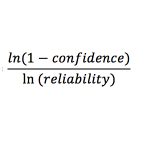The medtech industry is a prominent part of the healthcare sector. Consistent and excellent product quality is of supreme importance and even the smallest of discrepancies in the production process can make a huge dent in the company’s reputation. Having a stringent quality assurance system is inevitable.
Installation qualification (IQ), operational qualification (OQ) and performance qualification (PQ) form a vital part of the quality assurance system. They help verify and ascertain that a new instrument or equipment is installed appropriately and is performing as per the user’s requirements, to ensure that it delivers consistent results with predetermined standards of quality. This article details the importance of each component.
Installation Qualification (IQ)
To validate whether new equipment is capable of delivering the desired results, design qualification or DQ, is conducted. However, in the real-world situation, the performance of the equipment depends on the installation process. IQ authenticates whether or not the equipment or instrument being qualified, along with all the ancillary and sub systems, have been delivered, installed and commissioned as per the manufacturer’s instruction.
Also, any current good manufacturing practice (cGMP) requirements that are relevant to the IQ and the approach employed for conducting the IQ are well-documented in a validation master plan (VMP).
To pass the IQ successfully, installation must fall in sync with the manufacturer’s requirements per the following:
- Location and floor space
- Power, gas supply and other energy sources
- Operating and environmental conditions
Unpacking instruments and checking for damage - Cross-checking contents against the packing list
Documenting computer-controlled instrumentation - Verifying communication and connections with peripheral units
Using IQ stickers to tag instruments - Keeping a record of validation and calibration dates used for IQ
Preserving certificates and manuals of conformity - Operational Qualification (OQ)
Operational Qualification (OQ)
IQ is followed by OQ. It tests equipment for consistent performance as per the operator’s requirements and within the operating range specified by the manufacturer. One of the prerequisites for technical acceptance of the equipment and the facility is that all the parts listed in the test plan should be assessed individually and their performance be documented. OQ can be conducted only after a successful IQ.
Requalification is also important, especially after any modifications are made to the equipment, post any major maintenance work, or as a part of the quality assurance schedule. Basically, OQ serves the purpose of identifying and assessing the various features of equipment listed below that contribute towards final quality of the product:
- Signaling LEDs and display units
- Temperature fluctuations and controls
Low-temperature and overheating protection systems and alarms - Vacuum / Pressure controlling systems
- Fan and its speed controllers
CO2 controlling systems - Humidity measuring and controlling systems
- Air-flap controllers and servo motors
- Card access and reader controllers
- Temperature distribution in accordance with DIN 12880: 2007-05
Performance Qualification (PQ)
PQ is the last phase of the qualification process, and comprises verifying and documenting the performance of the equipment. It is conducted to assess whether or not the equipment is functioning productively within the desired working range. On the basis of the process description, an in-depth assessment plan is created before conducting PQ. The FDA has certain guidelines in place that are a part of the PQ protocols. These are as follows:
- Conditions pertaining to the manufacturing aspect such as equipment limits, operating parameters and component inputs
- A specific catalog of data which should be recorded or analyzed while conducting tests, calibration and validation
- Certain tests that should be performed to ascertain consistent quality during different steps of production
- Sampling plan that summarizes the methods used for sampling, during and in between the batches of production
- A methodology for analysis that makes data, scientific and risk-oriented decisions based on statistical data
Establishing contingency plans and variability limits to handle non-compliance
The system of GMP necessitates the practices of IQ, OQ and PQ for equipment qualification process. It helps manufacturers ascertain a consistent quality delivery from the equipment. Besides, all of these practices considerably cut down errors so that the product quality can be maintained in accordance with the relevant regulations and industry standards. You can conduct equipment qualification in-house or consult professionals who offer services for equipment validation.





